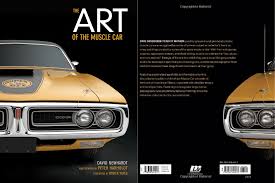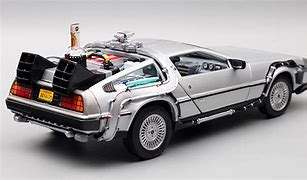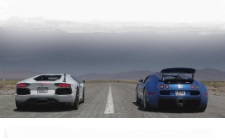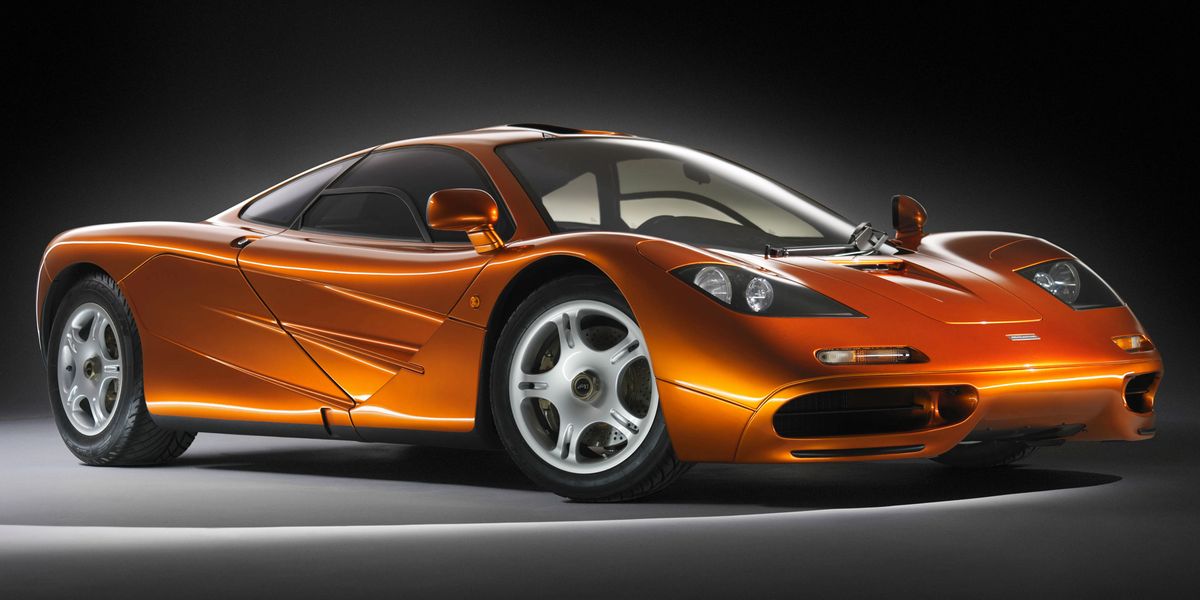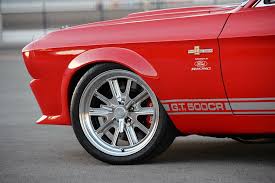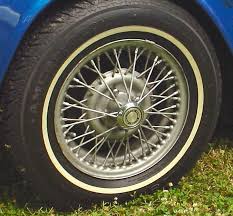A brief history of
Subaru
Introduction
The car manufacturer Subaru has made an important impact on the automotive world. In this article we will give a brief but detailed history of the Subaru marque.
We will look at the origins of Subaru looking at who, why, where and when Subaru was founded. We'll look at the design of the iconic Subaru logo and what are some the more significant Subaru models.
We'll take a glance at what racing history the Subaru has and who some of the most important people have been in the history of Subaru over the years.
Who, where, when and why was
Subaru founded?
Subaru, the Japanese automobile manufacturer known for its rugged and capable vehicles, was founded on July 15, 1953. The company's establishment can be traced back to the merging of two companies: Fuji Heavy Industries Ltd. (FHI) and five other Japanese companies. The formation of Subaru took place in Tokyo, Japan, with the aim of creating affordable and reliable vehicles that could withstand the country's challenging road conditions and mountainous terrain.
The idea behind Subaru's inception was to provide transportation options that were well-suited for Japan's rural areas and remote regions. The company sought to develop vehicles with excellent all-wheel drive capabilities, robust construction, and efficient engines that could navigate challenging terrain and adverse weather conditions. Subaru's founders recognized the need for reliable transportation that could cater to Japan's diverse geography, including snowy winters and mountainous landscapes.
Subaru's name itself carries significance, as it represents the Pleiades star cluster in the Taurus constellation, which holds cultural significance in Japan. The name was chosen to symbolize the six companies that merged to form Subaru, representing unity and the collective effort of the founding entities. It also reflects Subaru's commitment to reaching for the stars in terms of technological advancement, performance, and quality.
Throughout its history, Subaru has remained true to its core principles of engineering excellence and providing vehicles that excel in challenging conditions. The company's focus on all-wheel drive technology has set it apart from other manufacturers, making Subaru vehicles well-suited for off-road adventures, inclement weather, and even motorsport competitions.
In the 1970s, Subaru introduced the iconic Subaru Leone, which became the foundation for the brand's reputation for reliability and performance. The Leone, available in various body styles including sedans, wagons, and coupes, offered all-wheel drive as a standard feature, making it a standout in the market. This commitment to all-wheel drive technology helped solidify Subaru's position as a brand that prioritized safety, capability, and versatility.
Subaru's rally heritage began to take shape in the 1980s when the company officially entered the World Rally Championship (WRC). The Subaru Legacy, a mid-size sedan, formed the basis for Subaru's rally endeavors. With a turbocharged engine, all-wheel drive, and the legendary blue and gold livery, Subaru's WRC team achieved tremendous success, including multiple manufacturer championships and driver titles with the iconic Subaru Impreza WRX STI.
Subaru's racing success not only elevated the brand's profile but also showcased the durability and performance of its vehicles. The brand's commitment to all-wheel drive technology and the lessons learned from motorsport competition have directly influenced the design and engineering of Subaru's production vehicles, giving them a reputation for excellent traction, handling, and safety.
Today, Subaru continues to build on its foundation of engineering excellence and capability. The company's lineup includes a range of vehicles, from the rugged Outback and Forester SUVs to the sporty WRX and BRZ models. Subaru's commitment to safety, reliability, and adventure remains at the forefront, with advanced safety features and the integration of hybrid technology into its lineup.
Subaru's journey from its founding in Tokyo to its status as a global brand is a testament to its dedication to building vehicles that excel in challenging conditions and meet the needs of adventurous drivers. With a focus on all-wheel drive, engineering prowess, and a commitment to quality, Subaru has carved a unique niche for itself in the automotive industry, earning the loyalty and trust of its customers worldwide.
How did the
Subaru logo originate?

How did the Subaru logo originate?
The Subaru logo, much like the brand itself, has undergone a series of changes and refinements throughout its history. The logo has evolved to reflect Subaru's growth, values, and commitment to engineering excellence. The iconic Subaru emblem is instantly recognizable and has become synonymous with the brand's reputation for reliability, performance, and all-wheel drive capability.
The earliest versions of the Subaru logo featured a stylized representation of the Pleiades star cluster, also known as the Seven Sisters. This celestial cluster holds cultural significance in Japan and symbolizes unity and strength. The Pleiades logo represented Subaru's formation through the merger of six companies, and it embodied the company's commitment to collaboration, innovation, and reaching for the stars.
In the 1970s, Subaru introduced a refined version of the logo, simplifying the design while retaining the essence of the Pleiades symbol. The stars were arranged in a more compact and stylized manner, encapsulated within an oval shape. This iteration of the logo emphasized Subaru's dedication to simplicity, elegance, and timeless design.
In the 2000s, Subaru made another update to its logo, giving it a bolder and more dynamic appearance. The stars were transformed into three-dimensional, chrome-finished elements, representing the brand's commitment to technological advancement and modernity. The oval shape surrounding the stars was replaced with a sleek silver ring, further enhancing the logo's contemporary and sophisticated look.
Today, the Subaru logo features a refined and modern design. The Pleiades star cluster remains the centerpiece, representing Subaru's history, heritage, and values. The stars are arranged in a hexagonal formation, emphasizing balance, harmony, and strength. The silver ring surrounding the stars symbolizes excellence and unity, while the blue color reflects Subaru's connection with nature and the environment.
Subaru's logo is a visual representation of the brand's commitment to innovation, reliability, and adventure. It embodies Subaru's Japanese heritage, engineering excellence, and dedication to providing vehicles that can conquer challenging terrain and adverse weather conditions. The logo serves as a reminder of Subaru's roots and its continued pursuit of excellence in the automotive industry.
What are some of the significant
Subaru models?
Subaru has produced a range of significant models throughout its history, each contributing to the brand's reputation for reliability, all-wheel drive capability, and adventurous spirit. From rugged SUVs to performance-oriented sedans, Subaru's lineup has catered to a diverse range of drivers and earned a loyal following around the world.
One of Subaru's most notable models is the Subaru Leone, introduced in the 1970s. The Leone was a compact car available in various body styles, including sedans, wagons, and coupes. It showcased Subaru's commitment to all-wheel drive technology, making it one of the earliest mass-produced vehicles to offer this feature. The Leone's ruggedness, versatility, and impressive off-road capabilities made it popular among outdoor enthusiasts and those living in regions with challenging terrain and weather conditions.
In the 1990s, Subaru introduced the Subaru Outback, a rugged crossover wagon that combined the utility of an SUV with the handling and comfort of a car. The Outback was based on the Subaru Legacy platform and featured raised ground clearance, enhanced suspension, and Subaru's renowned all-wheel drive system. With its rugged styling, spacious interior, and off-road capabilities, the Outback captured the hearts of adventure-seeking drivers. It became an instant hit and paved the way for the crossover SUV segment, inspiring many other manufacturers to follow suit.
Subaru's performance-oriented models have also left a lasting impact on automotive enthusiasts. In the early 1990s, Subaru introduced the Impreza WRX, a turbocharged sports sedan that quickly gained a reputation for its rally-bred performance. The Impreza WRX showcased Subaru's success in the World Rally Championship (WRC) and offered impressive power, agility, and all-wheel drive grip. Its popularity soared among performance enthusiasts who appreciated its thrilling performance and practicality as a daily driver. The Subaru Impreza WRX STI, an even more potent variant of the WRX, further solidified Subaru's presence in the performance car segment and became an icon among rally fans.
In recent years, Subaru has continued to innovate and cater to evolving market demands. The Subaru Forester, a compact SUV, has become a staple in Subaru's lineup. Combining the versatility of an SUV with Subaru's signature all-wheel drive system, the Forester has established itself as a go-to choice for families and outdoor enthusiasts. Its spacious interior, off-road capability, and advanced safety features have made it a top contender in the highly competitive compact SUV segment.
Another significant model in Subaru's lineup is the Subaru BRZ, a rear-wheel-drive sports coupe developed in collaboration with Toyota. The BRZ showcases Subaru's commitment to delivering engaging driving dynamics and performance. With its lightweight design, balanced chassis, and precise handling, the BRZ has garnered praise from driving enthusiasts who appreciate its pure and exhilarating driving experience. The BRZ represents Subaru's dedication to performance-oriented vehicles and showcases the brand's ability to cater to drivers seeking sporty and engaging driving dynamics.
Subaru's commitment to environmental sustainability has led to the introduction of hybrid technology in its lineup. The Subaru Crosstrek Hybrid combines the capability of Subaru's all-wheel drive system with improved fuel efficiency and reduced emissions. The Crosstrek Hybrid represents Subaru's focus on environmentally friendly alternatives without compromising on the brand's core values of capability and adventure.
These models represent just a fraction of Subaru's most significant vehicles. Each model has played a vital role in shaping Subaru's reputation and appeal, showcasing the brand's commitment to engineering excellence, all-wheel drive technology, and meeting the diverse needs of drivers. Whether it's the off-road prowess of the Leone, the versatility of the Outback, the rally-inspired performance of the Impreza WRX, or the environmentally conscious Crosstrek Hybrid, Subaru's line-up reflects its dedication to producing vehicles that deliver reliability, safety, and adventure.
As Subaru continues to innovate and push the boundaries of automotive engineering, drivers can expect the brand to deliver vehicles that combine performance, versatility, and capability, while staying true to Subaru's core values and commitment to meeting the needs of its customers.

One of Subaru's Most Iconic Models
Who are some of the most important people in
Subaru's History
Behind Subaru's success and reputation as an influential automobile manufacturer are a number of significant individuals who have contributed to the brand's development, innovation, and growth. From visionary leaders to innovative engineers and motorsport enthusiasts, these individuals have played crucial roles in shaping Subaru's trajectory and establishing its unique identity.
One of the key figures in Subaru's history is Kenji Kita, the founder of Subaru's parent company, Fuji Heavy Industries (FHI). Kita's vision and entrepreneurial spirit laid the foundation for Subaru's success. He recognized the potential of creating affordable and reliable vehicles that could navigate challenging terrain and adverse weather conditions. Kita's commitment to engineering excellence and his passion for all-wheel drive technology set the stage for Subaru's distinctive identity and contributed to the brand's reputation for performance and capability.
Another significant individual in Subaru's history is Nobuhiko Murakami, an engineer and former president of Subaru. Murakami played a pivotal role in developing Subaru's renowned all-wheel drive technology and implementing it across the brand's lineup. His engineering expertise and dedication to creating vehicles with exceptional handling and stability helped solidify Subaru's position as a leader in all-wheel drive systems. Murakami's contributions to Subaru's engineering advancements, including the Symmetrical All-Wheel Drive, have made Subaru vehicles highly regarded for their surefootedness, safety, and off-road capabilities.
Furthermore, Subaru's involvement in motorsport owes much to the contributions of individuals like Noriyuki Koseki and David Richards. Koseki, a former president of Subaru Tecnica International (STI), the performance division of Subaru, played a vital role in Subaru's participation in motorsport events, including the World Rally Championship (WRC). Koseki's dedication to motorsport and his support for the Subaru World Rally Team elevated Subaru's profile in the racing world and contributed to the brand's reputation for performance-oriented vehicles.
David Richards, a motorsport executive, also left an indelible mark on Subaru's racing legacy. As the founder of Prodrive, Subaru's partner in the WRC, Richards brought his expertise and management skills to Subaru's motorsport endeavors. Under Richards' leadership, the Subaru World Rally Team achieved remarkable success, including three consecutive WRC Manufacturers' Championships in the late 1990s. Richards' strategic guidance and his ability to assemble a winning team solidified Subaru's reputation as a force to be reckoned with in motorsport and enhanced the brand's performance image.
In addition to these influential figures, countless engineers, designers, and executives have contributed to Subaru's success and reputation. Their dedication to innovation, craftsmanship, and delivering vehicles that embody Subaru's core values of reliability, capability, and safety has been instrumental in establishing Subaru as a respected name in the automotive industry.
Subaru's most significant people have been instrumental in shaping the brand's identity, values, and success. From Kenji Kita's visionary leadership to Nobuhiko Murakami's engineering prowess and the motorsport expertise of Noriyuki Koseki and David Richards, these individuals have left a lasting impact on Subaru's development, reputation, and the driving experience of Subaru owners worldwide.
Subaru's commitment to excellence, performance, and capability continues to be driven by the passion and dedication of its people. As Subaru looks towards the future, the brand will undoubtedly be shaped by the contributions of new visionaries and innovators who will carry on the legacy of those who have come before, ensuring Subaru's continued success as a respected and admired automobile manufacturer.

One of the most influential people in the history of Subaru
Subaru's Racing History
Subaru's racing history is deeply intertwined with its commitment to all-wheel drive technology and performance-oriented vehicles. The brand's participation in motorsport events, particularly in rally racing, has not only showcased the capabilities of Subaru vehicles but has also contributed to the development of Subaru's production models and the brand's reputation for performance and durability.
Subaru's entry into the World Rally Championship (WRC) in the early 1990s marked a significant milestone in the brand's racing history. With the introduction of the Subaru Legacy RS and later the iconic Subaru Impreza, Subaru established itself as a force to be reckoned with in the highly competitive world of rally racing. The Impreza became the cornerstone of Subaru's rally program and achieved remarkable success in the hands of legendary drivers such as Colin McRae and Richard Burns.
Subaru's breakthrough in the WRC came in 1995 when Colin McRae secured the brand's first WRC Drivers' Championship. This historic victory not only demonstrated the capabilities of the Subaru Impreza but also solidified Subaru's reputation for performance and reliability. The following year, Subaru captured the WRC Manufacturers' Championship, further establishing its dominance in the world of rally racing.
Subaru's success in the WRC continued in the late 1990s, with the team clinching consecutive Manufacturers' Championships from 1996 to 1997 and another Drivers' Championship in 2001, won by the late Richard Burns. The Subaru World Rally Team's accomplishments not only showcased the speed and agility of the Impreza but also highlighted the effectiveness of Subaru's all-wheel drive system in challenging rally conditions.
Subaru's rally legacy extended beyond the WRC. In the early 2000s, Subaru participated in the Rally America Championship, dominating the competition with the Subaru Impreza WRX and WRX STI models. The team secured numerous victories and championship titles, solidifying Subaru's position as a leading force in rally racing in North America.
Subaru's commitment to rallying also translated into the development of high-performance production models. The Subaru Impreza WRX and WRX STI became highly sought-after vehicles among driving enthusiasts, with their turbocharged engines, advanced all-wheel drive systems, and rally-inspired designs. These models offered a unique combination of practicality and exhilarating performance, making them popular choices for enthusiasts looking for a dynamic driving experience on both road and track.
Subaru's racing involvement extended beyond rally events. The brand has also been active in other motorsport disciplines, including endurance racing. Subaru competed in the grueling 24 Hours Nürburgring race, known for its demanding track conditions and rigorous competition. The team showcased the durability and performance of Subaru vehicles, achieving respectable results against formidable opponents.
Subaru's dedication to motorsport extends beyond professional racing, as the brand has also supported grassroots racing programs. Subaru's involvement in events like the Subaru Road Racing Team (SRRT) and the Global RallyCross Championship has provided opportunities for aspiring drivers and enthusiasts to compete and showcase their skills behind the wheel of Subaru vehicles.
Through its involvement in racing, Subaru has not only demonstrated its engineering prowess and performance capabilities but has also used motorsport as a platform for research and development. Lessons learned on the track have directly influenced the design and technology of Subaru's production vehicles, ensuring that the brand's road-going models benefit from the advancements made in the racing arena.
Subaru's racing history is a testament to the brand's commitment to performance, durability, and all-wheel drive technology. The achievements on the rally stages and the success in other motorsport disciplines have shaped Subaru's reputation as a manufacturer of capable and exhilarating vehicles. Subaru's racing legacy continues to inspire enthusiasts and drivers worldwide, reinforcing the brand's commitment to delivering vehicles that combine performance, safety, and adventure.
Summary
Subaru, the Japanese automobile manufacturer, has established itself as a brand synonymous with reliability, capability, and adventure. With a strong focus on all-wheel drive technology and a commitment to engineering excellence, Subaru has captured the hearts of drivers worldwide. The brand's lineup of vehicles, ranging from SUVs to performance-oriented models, showcases Subaru's dedication to meeting the diverse needs of its customers.
Subaru's reputation for reliability and durability is rooted in its history of producing vehicles capable of navigating challenging terrains and adverse weather conditions. The brand's commitment to all-wheel drive technology sets it apart from many other manufacturers, providing drivers with enhanced traction, stability, and confidence on the road. Subaru's success in motorsport, particularly in rally racing, has further solidified its image as a manufacturer of performance-oriented vehicles.
With a rich heritage of engineering excellence and a deep connection to its Japanese roots, Subaru continues to innovate and push the boundaries of automotive technology. The brand's dedication to safety, versatility, and environmental sustainability is evident in its advanced safety features, hybrid models, and commitment to reducing its carbon footprint. Subaru's unwavering commitment to delivering vehicles that inspire confidence, enable exploration, and provide a thrilling driving experience ensures that it will remain a respected and admired name in the automotive industry for years to come.
View Subaru Car Specifications
More Manufacturer Histories.
